artifacts salvaged long ago from an early burnham & root residence (since demolished)
This entry was posted on June 9 2017 by Eric

the chicago-based architectural firm of burnham and root was established in 1872 when the two men worked as apprentice draftsmen in the offices of drake, carter, and wight, building several private residences for the wealthy elite of chicago's meat industry. both of them married into wealthy families which allowed them to establish a basis for their business. burnham was known as the pragmatic designer and impressive salesperson, while root was the engine, driving the firm's creativity.
the most significant buildings designed by burnham and root were built during the 1880's and early 1890's. during that time, root's architectural designs paved the way for modern day skyscrapers through the introduction of steel support beams, which allowed root to build higher. the rand mcnally building, completed in 1890, was the first ever steel-framed skyscraper in the world. another characteristic of root's designs that revolutionized modern architecture is his invention of the urban "office block" floor plan.
as commissions multiplied, burnham and root had the opportunity to experiment and refine their style to create an entirely new aesthetic that was free of historical or european influences. such buildings as the great northern hotel (1892), the argyle and the pickwick demonstrate root's distinctive style.
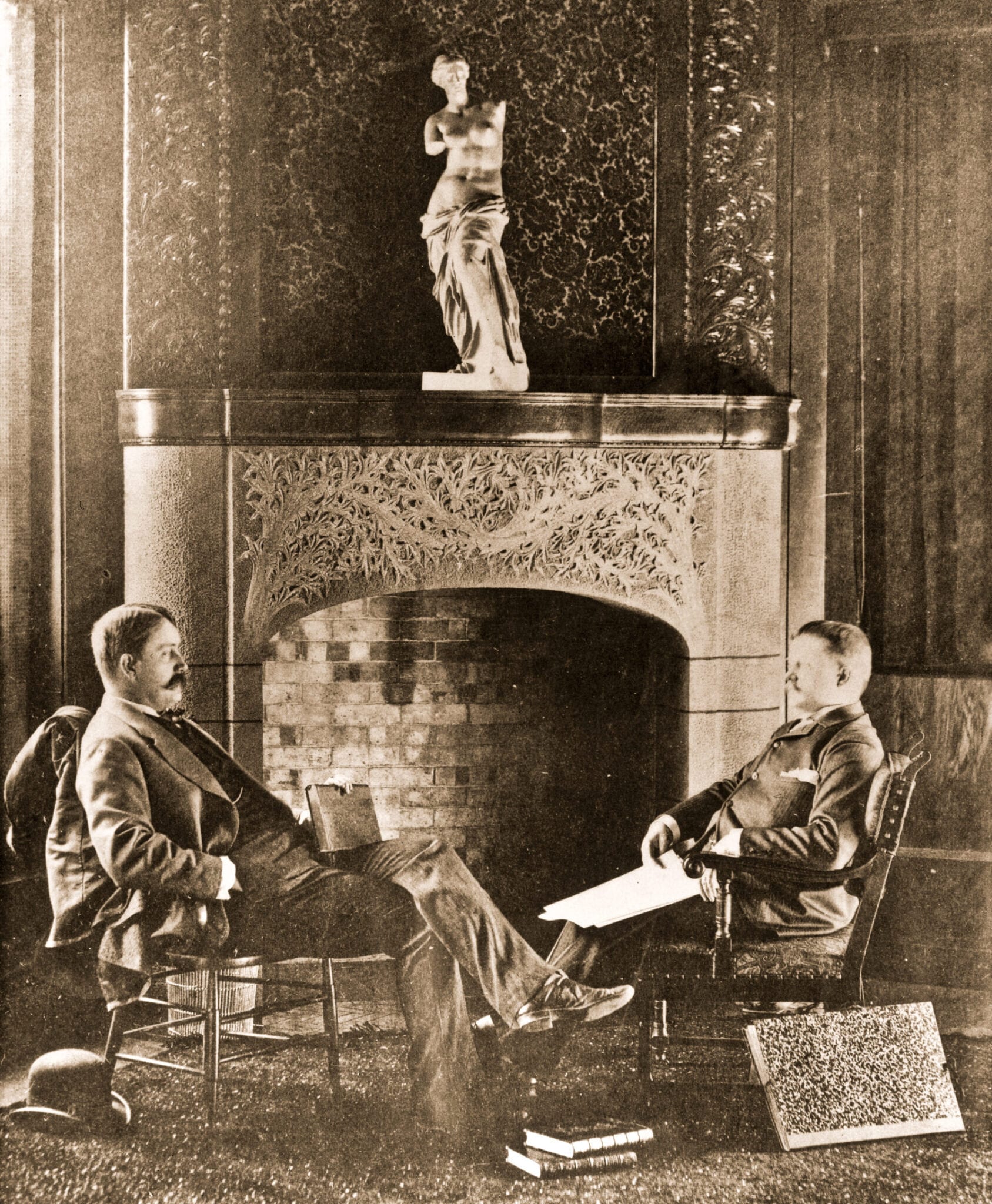
in 1890, when chicago was named the site for the columbian exposition world's fair, celebrating the 400th anniversary of the discovery of the united states, root was given the important task of coordinating the event. after deciding on the location of the fair and doing the preliminary plans of the site, he decided that "no one architect should design these buildings, but a number of the best architects in the united states, all working together as one commission." hence, the greatest architects of the time were invited to participate in the design of the world's columbian exposition. root died in 1891, leaving his greatest project incomplete. daniel burnham, despite only having practical experience and no formal training in the field of architecture, was then given the responsibility to finish coordinating the fair. when it opened for six months, from june to november 1893, it was a complete success.
following the loss of his business partner, burnham continued to operate under the name d. h. burnham and co. the projects begun by root were completed, including the masonic temple in 1892, which was for a short period the tallest building in the world at 22 stories. it is then that burnham's architectural talent became the driving force of the business, resulting in such iconic buildings as the flatiron building in new york city. burnham was unable to maintain the architectural progress made by root, but he demonstrated great versatility in his style.
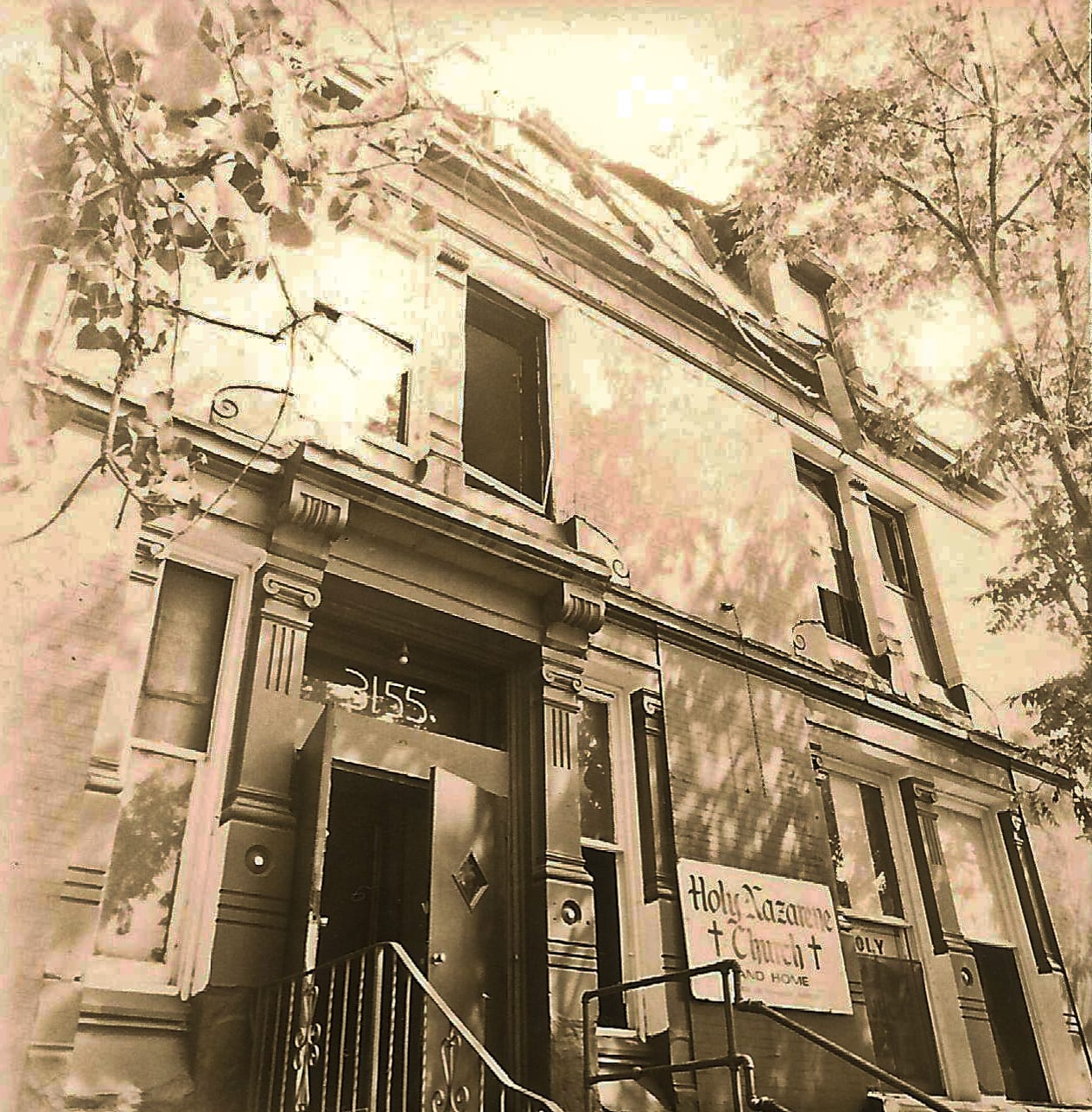
many years earlier, an important figure and future resident of burnham and root's 3155 s. michigan building was born - albert hayden, in columbus, ohio, on may 18, 1847. when two years of age his parents moved to new york city, where he entered the preparatory school of professor quackenboss, the well-known author of text-books, where he continued five years, and subsequently was a pupil of the new milford, conn., military academy one year. in 1861, he entered kenyon college, and graduated with honors as master of arts in the class of 1869.
immediately after his graduation he began business life as a member of the firm of p. hayden & son, newark, n.j., manufacturers of brass goods. the firm had in their employ a man by the name of benson, who possessed the secret of manufacturing the plated metal used for the reflectors of hack lamps, coffin ornaments, etc., and as the firm was the only producer of these goods in america, benson demanded, and received, an enormous salary for his work.
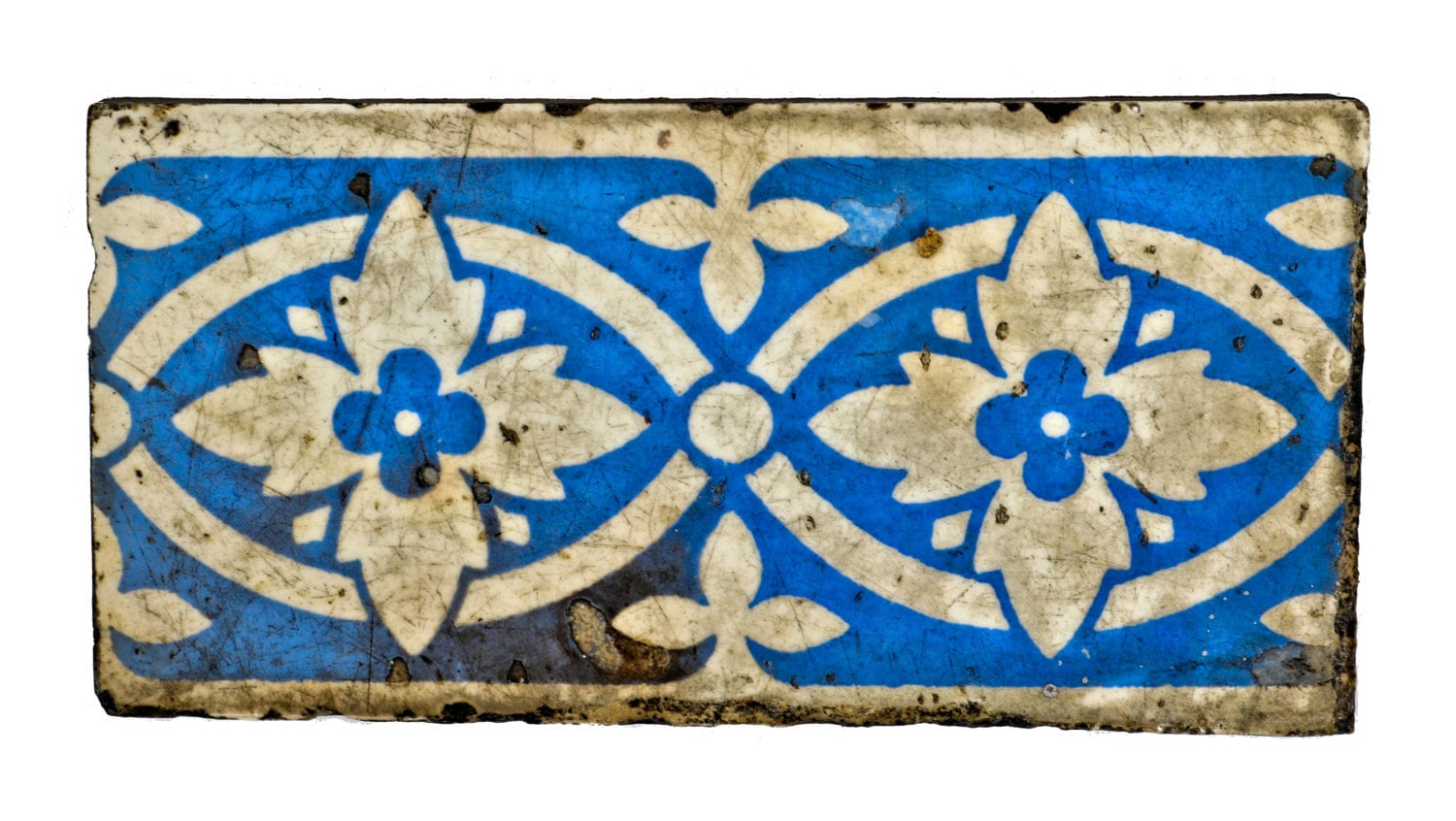
hearth tile from hayden house parlor. fabricated by minton hollins & company, stoke on trent.
the method of making this metal was unknown elsewhere, save in germany, and the fact that he had this secret to learn determined mr. hayden to solve the mystery. all attempts to persuade benson to divulge the process having failed, he was discharged and mr. hayden set about the task of discovering the method of its manufacture. his scientific knowledge was brought to bear upon the work, foreign books were pored over, experiment after experiment was tried, and all to the result of repeated failures. to succeed in uniting a thin sheet of silver and a brick of copper, so that they might be rolled out together into a long wide sheet of plated metal meant a fortune, and the world's gaining another step in the combination of metals. he succeeded in occasionally producing a small quantity of the coveted material, but all attempts toward wholesale lots were invariably unsuccessful.
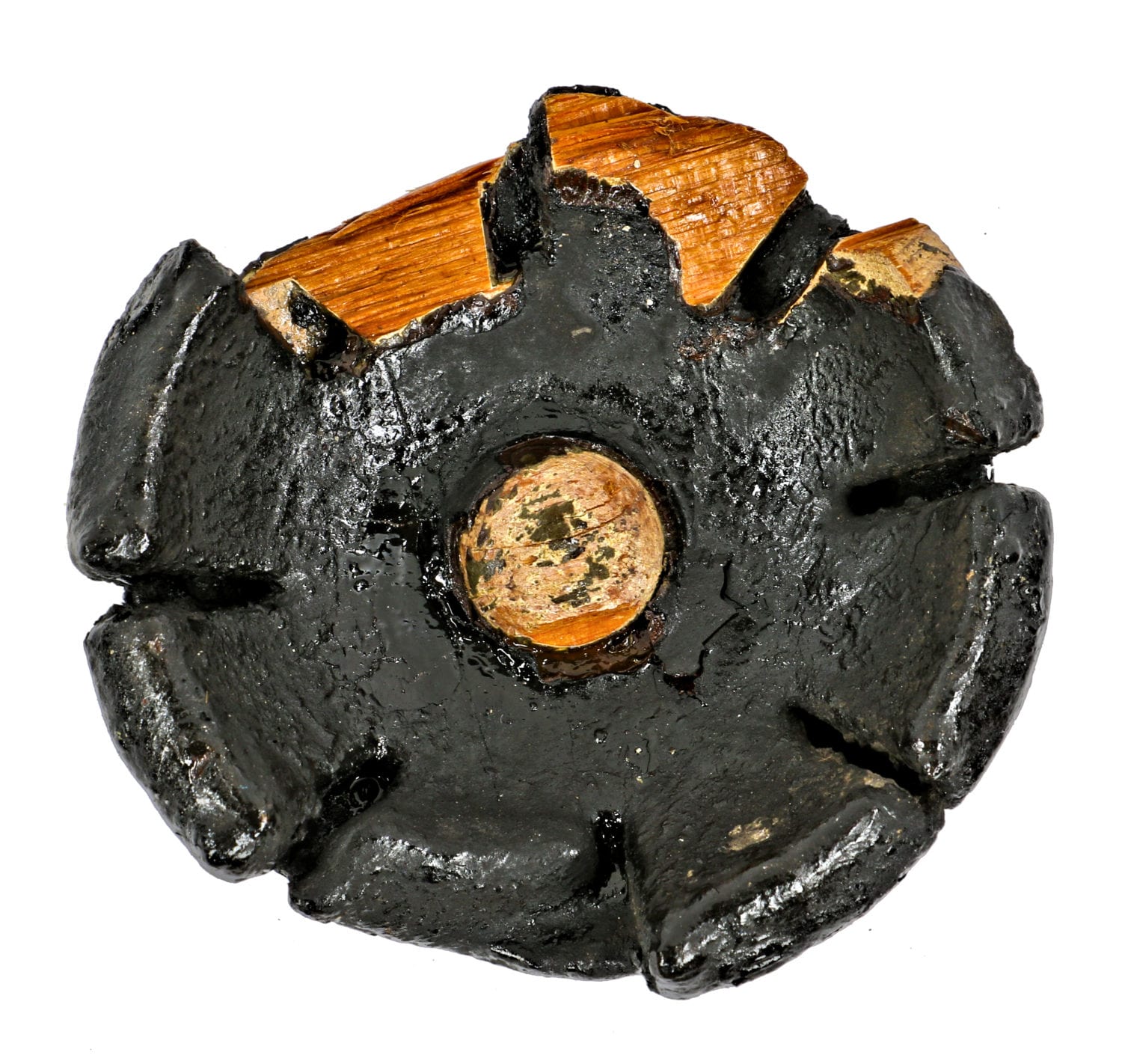
courtesy of the bldg. 51 museum collection. note: the carved wood floral ornament, salvaged from an exterior bracket, was from the mary a. rozet house (1878).
one day, while pondering over the enigma, an english mechanic, who had worked in germany for a number of years in a plating establishment, accidentally came into the workrooms where mr. hayden was engaged, noticed the work he had before him and remarked that he had formerly been engaged in the same occupation in a german mill. a few pointed queries were made by mr. hayden, and in less than twelve hours the secret was known which resulted in the production of the finest plated metal in the world in desired quantities.

unrestored c. 1879 solid turned cherry wood interior hayden house staircase newel post cap and plinth (burnham & root, architects)
in his degree essay before the kenyon college mr. hayden stated the results of his labors. this paper attracted universal attention and made a decided stir in the metal world, giving him the prestige of an expert whose practical knowledge possessed the weight of an authority. the hayden is finer and of more commercial value than the softer german product, and enjoyed great success through great demand by all manufacturers in the united states as well as overseas.
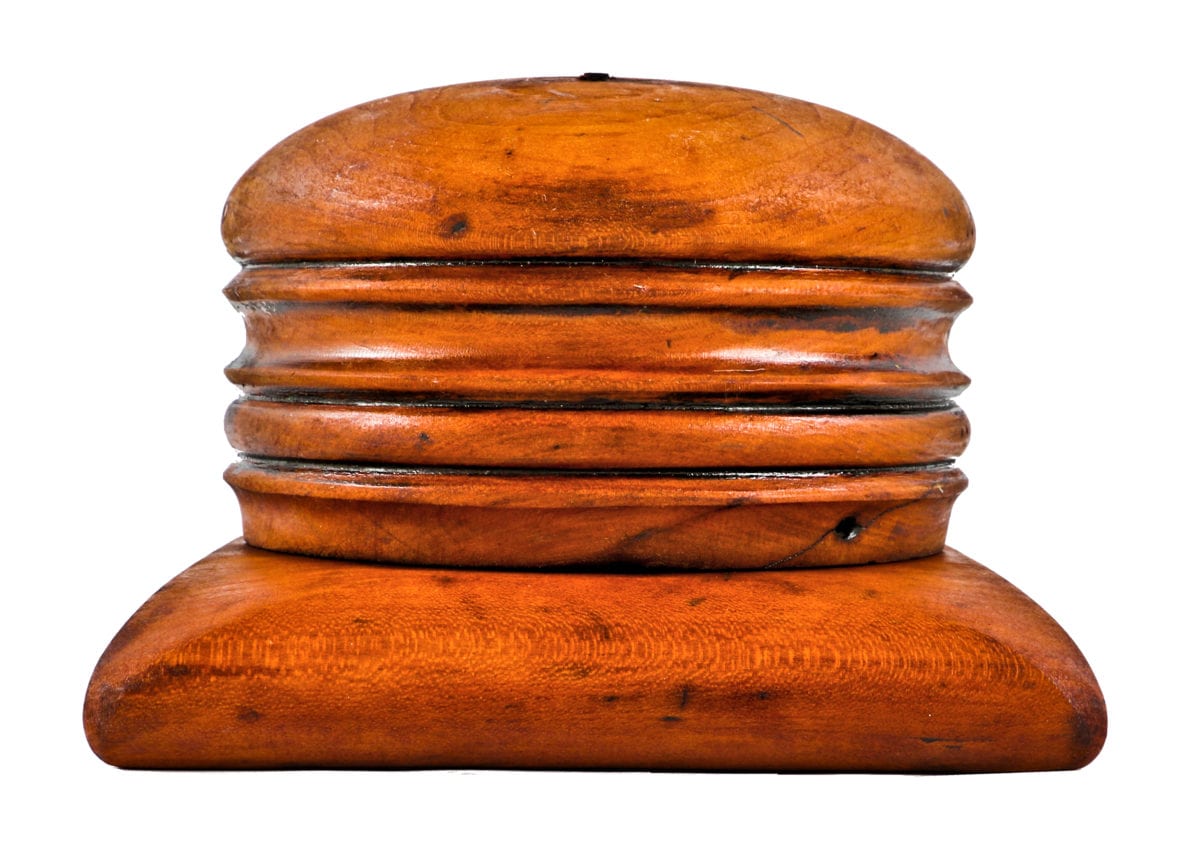
turned solid cherry wood hayden house staircase newel cap
in may, 1877, after a stay of nine years in newark, he came to chicago and assumed the entire control of the chicago branch of p. hayden & co.'s saddlery and hardware business. it was through his enterprise and encouragement that the chicago academy of fine arts was rescued from dissolution. with the assistance of charles l. hutchinson, he raised $60,000 by subscription among chicago's citizens, and tendered the amount to the academy, thus placing it beyond the possibility of failure. the excellence and fine condition of the first regiment was due to his energetic action in providing a stated subscription to secure a certain amount for expenses, and from the impetus thus given that organization their present armory resulted, and a future edifice, rivaling any to be found in eastern cities, was then contemplated. the structure known as the exposition building was erected solely by a subscription of nearly $30,000 secured by mr. hayden.
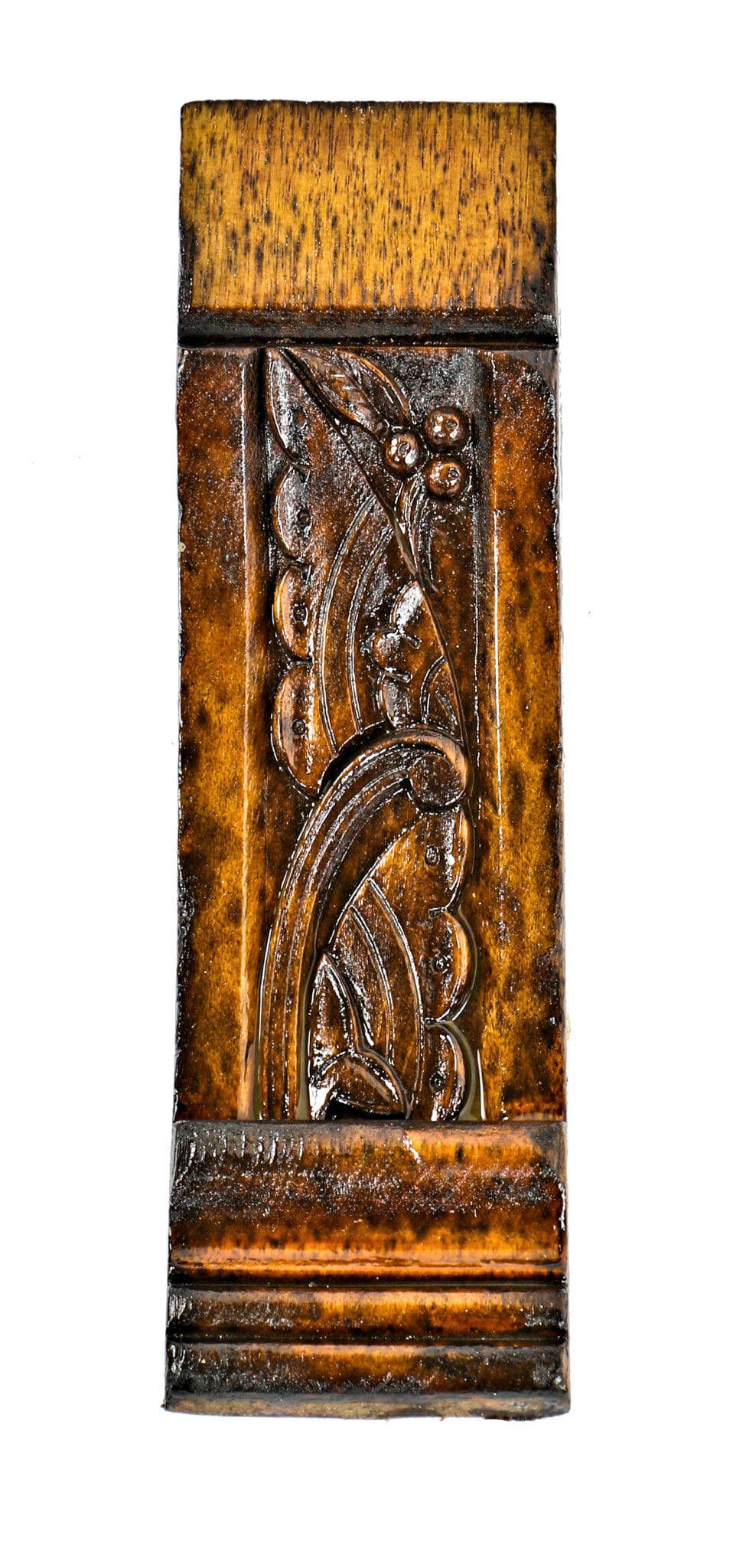
hand carved built-in or cabinet bracket or corbel removed the hayden house shortly before demolition.
in 1881, he was nominated, by a majority '' one hundred and fifty votes, over ex-president r. b. hayes, as trustee of kenyon college, and was re-nominated by a clear majority over several prominent gentlemen in may, 1885. he resigned this office in favor of j. h. g. kendig, of chicago. mr. hayden was known as the originator of the hayden hollow tile paving material which proved satisfactory on chicago's streets, and later introduced the fire-proof tiling which provided "absolute guaranty" against fire in any building where used.
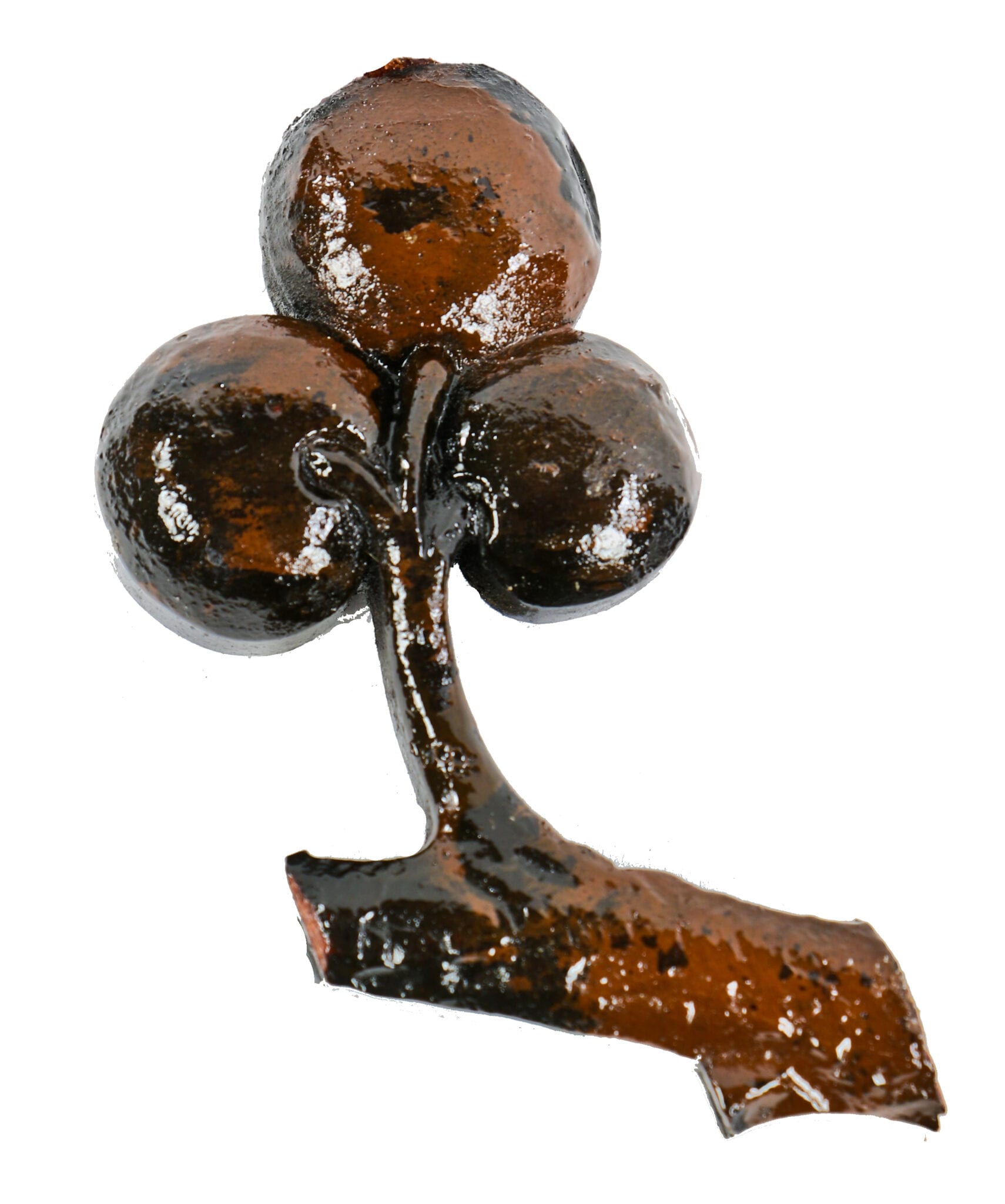
carved wood fragment salvaged from hayden house (burnham & root) interior staircase panel
for several years he was actively engaged in promoting the welfare of the celebrated beethoven club, and served as vice-president and president of that organization. the unique trade-mark of a flying eagle carrying a pair of hames in its talons and a bit in its beak, used by the p. hayden & son's houses at columbus, st. louis, detroit and chicago, is a piece of his ingenuity and is one of the most striking commercial advertisements connected with the trade. mr. hayden was deeply involved in each of the sixteen establishments of the p. hayden company, which later Incorporated in january, 1884.
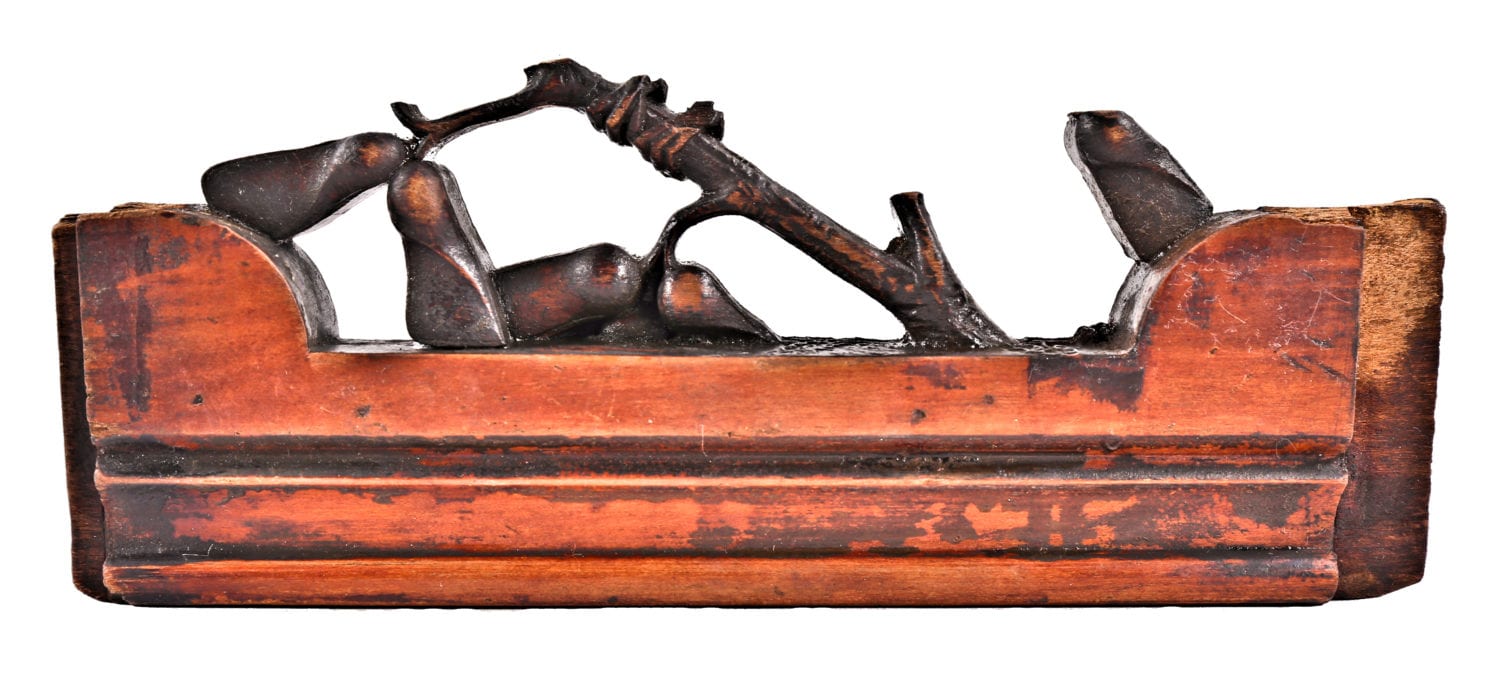
hayden house staircase baluster panel fragment. note the finely carved bird's feet. the panels contained carved leafage, berries and birds. most of the panels were destroyed by souvenir seekers looking to break off the full-figured birds.
the hayden house, located at 3155 s. michigan avenue, was completed in 1879 by the architectural firm of burnham and root. research on the house's interior and exterior architectural characteristics is currently in progress. the few artifacts residing in the bldg. 51 museum collection provide some information pertaining to the staircase arrangement and design, along with the diminutive corbel, removed from the built-in. the richly colored blue and white fireplace hearth tile was made by minton china works, stoke on trent, england. the house was last occupied by nazarene church and home, before its demolition.
early burnhan and root residential commissions:
their first work in 1873 was designing ahouse for c. mason at monroe and laflin streets. then followed the a. e. bourniqiie residence and dancing academy, twenty-third street and calumet avenue, residences for john b. sherman, george e. adams. mrs. catherine price, henry d. lloyd, f. f. spencer, a. h. burley, o. w. clapp, edward engle, h. h. shufeldt, isaac eldredge, mary a. rozet, gen. phil sheridan. j. m. walker, hugh r. wilson, albert hayden, w. t. baker, stephen gale, norman b. ream, mrs. julia f. porter, c. c. baker, augustus byram, jonathan w. brooks, jr., w. f. cobb. arthur j. caton, thomas dent. sarah o. egan, s. egan, byron l. smith, tappen halsey, marvin hughitt, john b. ailing, owen f. aldis, arthur bingham, john c. black, james chamley, major h. a. huntington, charles l. hutchinson, a. j. kirkwood, s. a. kent, w. c. kelley, palmer v. kellogg, john h. wrenn, c. b. farwcll, john v. farwell, w. d. walker, thomas r. birch, george s. hankins. h. m. kinsley, w. r. linn. george lord, robert strahorn, a. a. sprague, james, s. joseph frank, vv. e. hale. john a. lynch, george h. wheeler, edward e. ayer, charles counselman, david k. hill, lawrence maitwell, jr., max a. meyer, john r. true, reginald de koven.
This entry was posted in , Miscellaneous, Bldg. 51, New Products, Events & Announcements, New Acquisitions, Featured Posts & Bldg. 51 Feed on June 9 2017 by Eric
WORDLWIDE SHIPPING
If required, please contact an Urban Remains sales associate.
NEW PRODUCTS DAILY
Check back daily as we are constantly adding new products.
PREMIUM SUPPORT
We're here to help answer any question. Contact us anytime!
SALES & PROMOTIONS
Join our newsletter to get the latest information
























